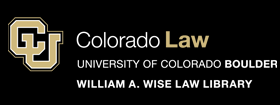Document Type
Article
Publication
The Yale Law Journal
Year
2025
Citation Information
Rebecca Aviel, Margot Kaminski, Toni M. Massaro, and Andrew Keane Woods, From Gods to Google, 134 Yale L. J. 1269 (2025), available at https://scholar.law.colorado.edu/faculty-articles/1673.
Abstract
The First Amendment has become a significant barrier to sensible technology regulation. The conventional explanation for this is the Court's deregulatory turn in free-speech law. But the Lochnerization story is incomplete. The Court's profound solicitude for religious speakers plays a central role in the current digital-free-expression landscape. By protecting the speech of certain religious dissidents, the Court has created a set of constitutional entitlements that logically extend to technology firms. Along the way, the Court has eroded its ability to apply the First Amendment sensibly to novel technologies.
This Feature draws the doctrinal through line from gods to Google. We first sketch the basic contours of today's technology regulation and explain why it is vulnerable to First Amendment challenge. We then give an overview of free-speech case law that develops what we call the oppressed-speaker paradigm. The Roberts Court has been motivated not just by free-market zeal but also by the trope of a persecuted religious minority standing fast in the face of a domineering and majoritarian regulator.
We pay special attention to 303 Creative LLC v. Elenis, identifying several doctrinal defects likely to have an impact on technology regulation. Technology firms have wasted no time in relying on 303 Creative to challenge a variety of new laws—most notably in last Term's Moody v. NetChoice, LLC, which involved free-speech challenges to the regulation of internet platforms. The Court in Moody, however, sidestepped or ignored the most serious implications of 303 Creative.
It may be tempting to think the Court could reconcile the two cases by distinguishing religious speakers from platforms. But doing so would impermissibly enshrine viewpoint and speaker discrimination into free-speech law. The Court thus confronts a conundrum of its own making: either (1) apply the principles developed for religious speakers to new technologies and expose a wide range of technology policy tools to constitutional attack, or (2) create special rules for religious speakers, which would violate the Court's own notions about viewpoint and speaker neutrality. A principled resolution of this conflict cannot be that free-speech law affords special protection for religious speakers. The Roberts Court must find legitimate and coherent limiting principles for the First Amendment landmines it has laid.
Copyright Statement
Copyright protected. Use of materials from this collection beyond the exceptions provided for in the Fair Use and Educational Use clauses of the U.S. Copyright Law may violate federal law. Permission to publish or reproduce is required.


